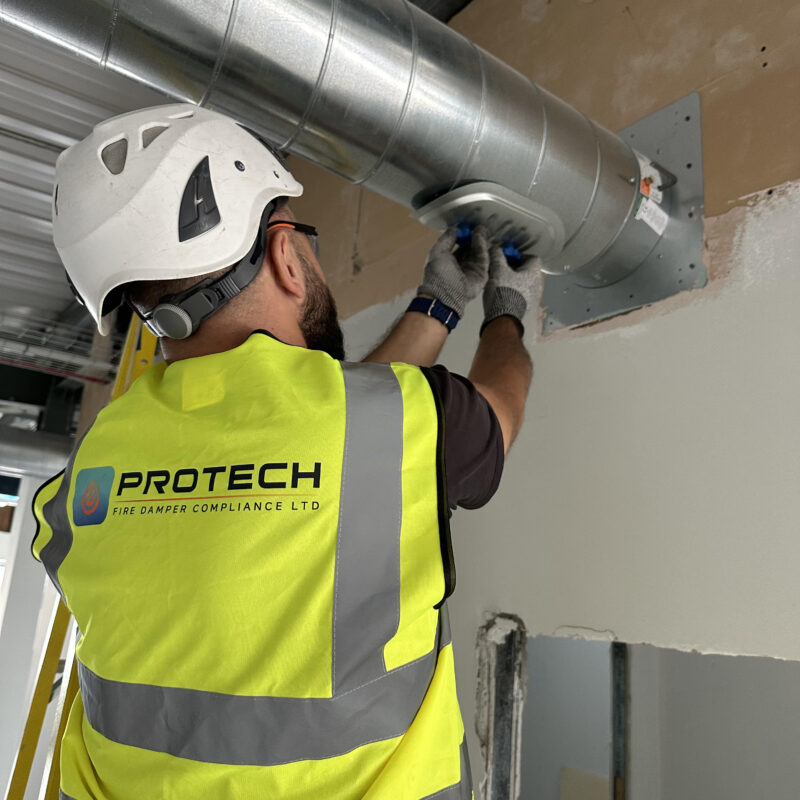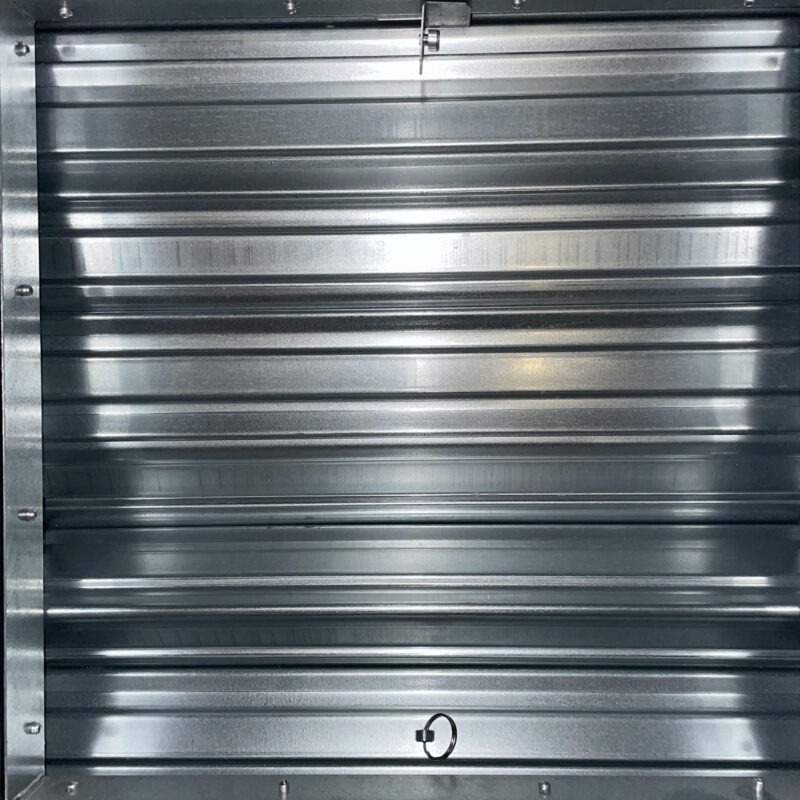According to Standard BS9999:2017, all fire dampers need to be tested after installation by a competent person and compliance guidelines require annual fire damper testing is carried out. If a fire damper is found to not be operating correctly, we can carry out remedial works to ensure the damper is operating to comply with BS9999 standards.

Fire Damper Inspection
To achieve fire damper compliance every damper must be inspected, and a drop test performed. The first stage of a fire damper test procedure is a visual inspection. The visual inspection is completed on the damper to ensure the following:
- Fitted in correct orientation
- Transit tape over the fusible link has been removed
- All runners and channels are clean and clear from obstructions
- Springs / straps are mounted securely and not twisted
- Correct fixings used on damper: aluminium rivets (not Tek screws)
- Correct support for the damper, and integrity of ductwork either side of damper
- Surrounding fire stopping is complete, undamaged and free from defects
- No serious signs of corrosion
- Fusible link / bar is in good condition, with no visible signs of damage or decay
Most faults or defects are identified during the initial inspection. Should there be an accessibility issue, obstruction, or damage to the damper, these will be noted as required remedial actions. Once all visual inspections are complete and satisfactory, a drop test can be carried out.
Fire Damper Drop Test
Once the visual inspection is complete the engineer will perform a drop test. This is one of the most important tests because it ensures the fire damper operates correctly in a fire condition.
Fire dampers contain a fusible link or bar that is designed to melt at approximately 165°F This causes the fire damper curtain or shutter to close and seal the duct. During the drop test, this fusible link is manually released.
Whilst performing a fire damper drop test the engineer will:
- Manually released the fusible link / bar to allow the curtain to drop into closed position
- Ensure the damper curtain fully closes, checking that the curtain blades lock into correct position and create a seal
- The fusible link / bar will be inspected for defects or damage
- Whilst in close position the damper will be cleaned and lubricated
- Dampers will then be opened / re-set, whilst ensuring the bottom blade remains parallel within the top of the damper casing
- Photographic evidence will be taken of the damper this includes location, initial state position, closed position and reset position


Fire Damper Report
After conducting the visual inspection and drop test, our engineers will prepare a comprehensive fire damper testing report. This report includes the following information.
- A detailed plan of fire damper locations
- Information about the type of fire dampers installed
- Photographic evidence of any issues found
- Fire damper drop test results
- Notification of any remedial work required for compliance
A fire damper report is an important document that you will need to keep as proof that your fire dampers have been tested per the regulations. Failure to produce this report when asked may result in prosecution.
Protech provides one of the most comprehensive reports available on the market. Including full photographic evidence of testing and observations, we supply the report in an electronic PDF format. This ensures it can be easily stored on your servers. And that it can be viewed from any digital device including smartphone, tablet and PC.
How often should you conduct fire damper testing?
Regulation BS 9999:2017 stipulates that all fire dampers be inspected by a qualified and competent person at least once each year, however dampers in hospitals or high-risk environments will require more frequent testing.


